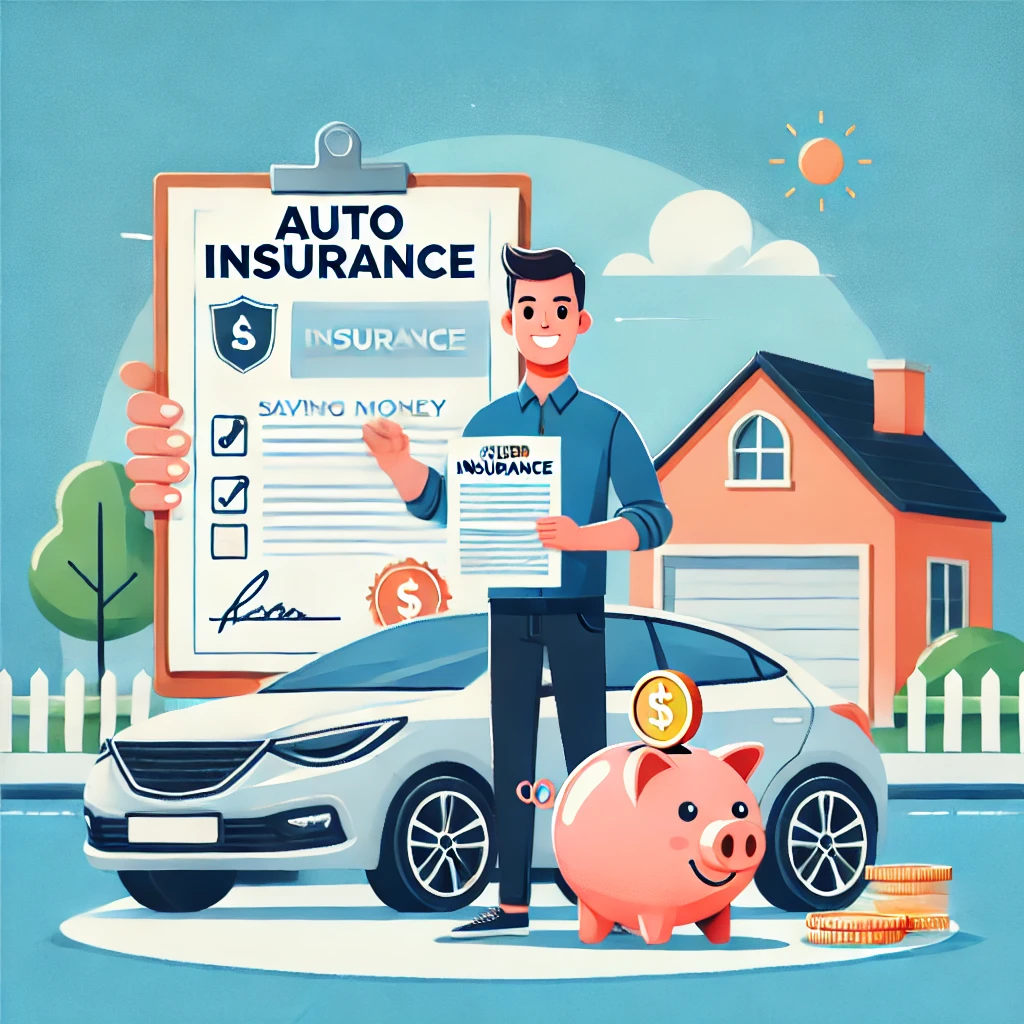Auto insurance is a necessary expense for drivers, but it doesn’t have to break the bank. Whether you’re a new driver or someone looking to lower their existing premiums, there are many practical ways to reduce the cost of your auto insurance while maintaining adequate coverage. This guide explores actionable strategies, tips, and considerations to help you save money on your car insurance policy.
1. Understand the Factors Influencing Auto Insurance Costs
Auto insurance premiums are determined by a variety of factors. By understanding these, you can identify areas where you may have control:
1.1. Driving Record
A clean driving record with no accidents or traffic violations can significantly reduce premiums. Insurers view drivers with fewer violations as less risky.
1.2. Vehicle Type
The make, model, and year of your car affect insurance costs. High-performance or luxury vehicles typically have higher premiums due to their repair costs and theft rates.
1.3. Coverage and Deductibles
The extent of coverage and your chosen deductible amount also influence premium costs. Comprehensive and collision coverage, while protective, come at a higher cost.
1.4. Location
Where you live impacts your insurance rates. Urban areas with higher crime and accident rates often result in higher premiums compared to rural areas.
2. Shop Around for the Best Rates
One of the most effective ways to lower auto insurance costs is by comparing quotes from multiple providers.
2.1. Use Online Comparison Tools
Platforms like Progressive, GEICO, or independent aggregators allow you to compare quotes side by side. This can help you identify the most cost-effective policies for your needs.
2.2. Speak with Independent Agents
Independent insurance agents can provide a range of policy options across different insurers, often uncovering deals you may not find online.
2.3. Review Customer Service Ratings
Cost isn’t everything. Check reviews and ratings to ensure the insurer provides good customer support and fair claim processes.
3. Increase Your Deductible
A deductible is the amount you pay out-of-pocket before your insurance kicks in for a claim. Opting for a higher deductible can lower your premium significantly.
3.1. Evaluate Your Financial Readiness
Before choosing a higher deductible, ensure you have enough savings to cover the cost in case of an accident.
3.2. Balance Savings and Risk
While a higher deductible reduces premiums, it increases your financial responsibility in a claim. Choose a deductible that aligns with your budget and risk tolerance.
4. Bundle Insurance Policies
Many insurers offer discounts when you bundle multiple policies with them, such as home, renters, or life insurance.
4.1. Benefits of Bundling
Bundling simplifies your insurance management and often results in a discount of 10–25% on your premiums.
4.2. Verify Coverage Needs
Ensure that all bundled policies meet your needs. Sometimes, standalone policies may still be cheaper, even without discounts.
5. Maintain a Clean Driving Record
Safe driving is one of the most effective ways to lower auto insurance costs over time.
5.1. Avoid Speeding and Traffic Violations
Tickets and violations can increase premiums by as much as 20–30%. Obey traffic laws and avoid risky behavior on the road.
5.2. Participate in Defensive Driving Courses
Many insurers offer discounts to drivers who complete approved defensive driving programs. These courses not only improve safety but also demonstrate responsibility.
6. Consider Usage-Based Insurance
Usage-based insurance (UBI) programs calculate premiums based on your actual driving behavior.
6.1. Telematics Devices
Insurers may provide a device that tracks mileage, speed, braking habits, and other driving behaviors. Safer drivers can earn discounts of up to 40%.
6.2. Pay-Per-Mile Plans
If you drive infrequently, a pay-per-mile policy might save you money. These plans charge a low base rate plus a per-mile fee.
7. Take Advantage of Discounts
Most insurance companies offer a variety of discounts. Be proactive in identifying and claiming them.
7.1. Common Discounts
- Good Driver Discount: Rewarded for maintaining a clean driving record.
- Good Student Discount: Available for students with a high GPA.
- Multi-Car Discount: Applies when you insure multiple vehicles on the same policy.
- Low-Mileage Discount: For drivers who use their car sparingly.
- Safety Features Discount: Cars equipped with features like anti-lock brakes, airbags, and theft alarms often qualify.
7.2. Ask Your Insurer
Not all discounts are advertised. Speak with your insurer to discover hidden savings opportunities.
8. Regularly Review and Update Your Policy
Your insurance needs and circumstances can change over time. Regularly reviewing your policy ensures you’re not paying for unnecessary coverage.
8.1. Adjust Coverage as Your Car Ages
Older vehicles may not need comprehensive or collision coverage if their value is low. Switching to liability coverage can save money.
8.2. Update Mileage Estimates
If you’ve started working from home or drive less frequently, update your insurer with lower mileage estimates to qualify for discounts.
8.3. Remove Unnecessary Add-Ons
Extras like roadside assistance or rental car reimbursement might not be necessary if you rarely use them.
9. Improve Your Credit Score
In many states, insurers consider credit scores when calculating premiums. A higher credit score often translates to lower insurance costs.
9.1. Pay Bills on Time
Timely payments on credit cards, loans, and utilities can improve your credit score over time.
9.2. Reduce Debt
Lowering your credit utilization ratio can positively impact your credit score and, in turn, your insurance premiums.
9.3. Monitor Your Credit Report
Regularly check your credit report for errors and dispute inaccuracies that could lower your score.
10. Drive a Car That’s Cheap to Insure
Certain cars are inherently less expensive to insure due to their safety ratings, repair costs, and theft rates.
10.1. Research Before Buying
When purchasing a new or used car, compare insurance costs for different models. Sedans and compact SUVs often have lower premiums than sports cars or luxury vehicles.
10.2. Consider Safety Ratings
Vehicles with high safety ratings and advanced safety features are less risky to insure.
11. Join a Group or Association
Some organizations and alumni groups offer discounted rates on auto insurance to their members.
11.1. Professional Associations
Check if your employer, industry association, or union has partnerships with insurance providers.
11.2. Alumni Discounts
Many universities and alumni networks negotiate special rates with insurers for graduates.
12. Be Strategic About Filing Claims
Filing multiple claims can raise your premiums significantly.
12.1. Evaluate Claim Costs
For minor damages, it may be cheaper to pay out-of-pocket rather than filing a claim that could increase your premiums.
12.2. Focus on Major Incidents
Reserve claims for significant accidents or damages that exceed your deductible by a substantial margin.
13. Switch Insurance Providers Periodically
Loyalty doesn’t always pay in the insurance industry. Periodically shopping for new policies can uncover better deals.
13.1. Avoid Loyalty Traps
Long-term customers sometimes face “price creeping,” where premiums rise gradually without justification.
13.2. Leverage Competitive Quotes
Use quotes from other insurers as leverage to negotiate lower rates with your current provider.
14. Pay Premiums Annually or Semi-Annually
Many insurers charge extra fees for monthly payment plans. Paying your premium in full can result in discounts.
14.1. Avoid Installment Fees
Eliminating monthly fees can save you 5–10% on your total premium costs.
14.2. Set Up Automatic Payments
Some insurers offer discounts for setting up autopay from your bank account.
15. Stay Informed About State Regulations
Each state has different requirements for auto insurance. Staying informed can help you avoid paying for unnecessary coverage.
15.1. Understand Minimum Coverage Requirements
Ensure your policy meets state-mandated requirements but avoid over-insuring beyond what you need.
15.2. Take Advantage of State Programs
Some states offer programs for low-income drivers to access affordable insurance options.






